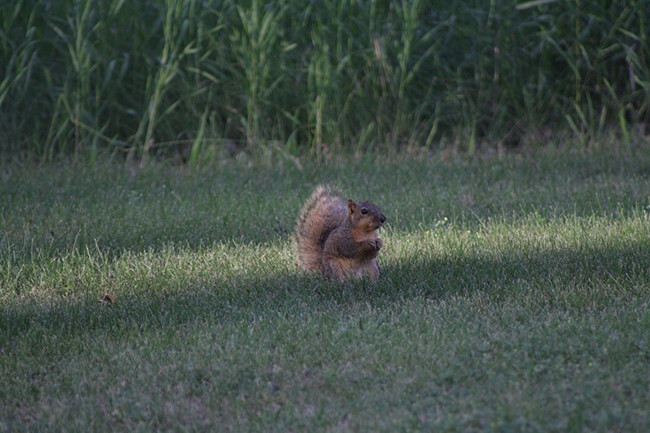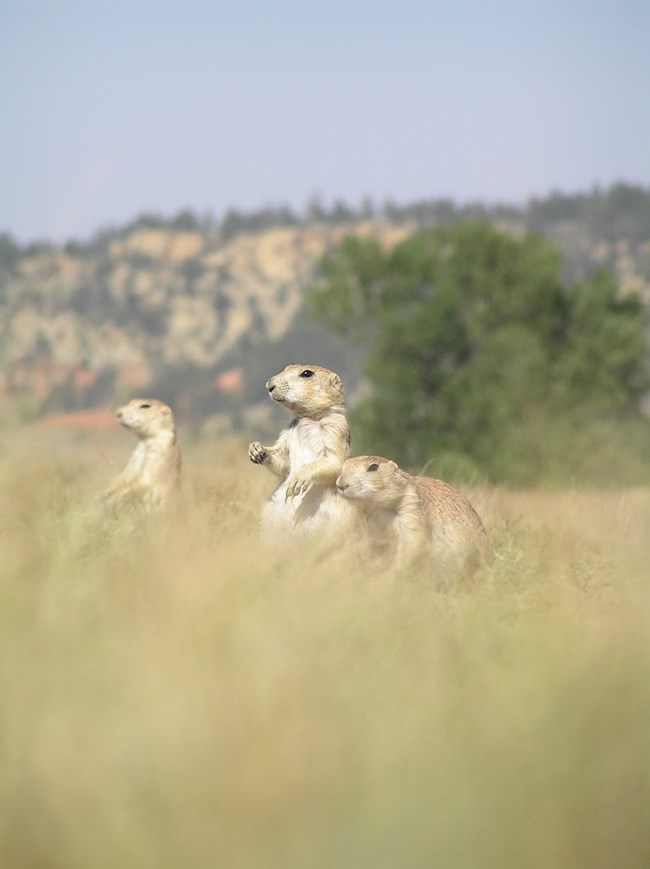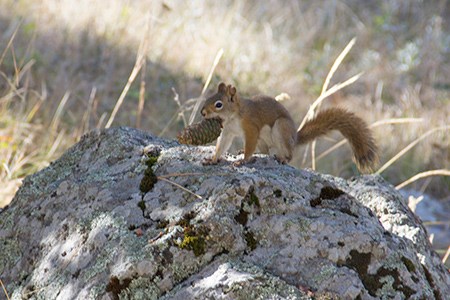
NPS / Avery Locklear The most common mammal sighting, squirrels are an ever-present part of the ecosystem at Devils Tower National Monument. These critters include the red squirrels and least chipmunks which chatter at you as you pass on the Tower Trail, and the hundreds of black-tailed prairie dogs that populate the floodplain near the Belle Fourche River. Squirrels - (Sciuridae):
Commonly seen squirrels: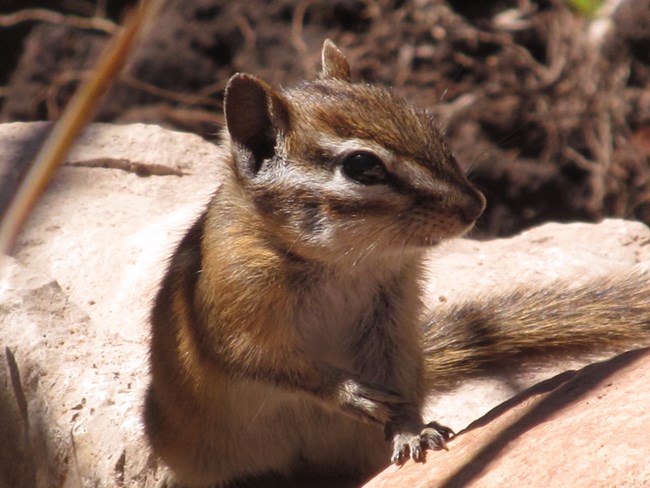
NPS photo Least chipmunk (Tamias minimus)
Quick facts:
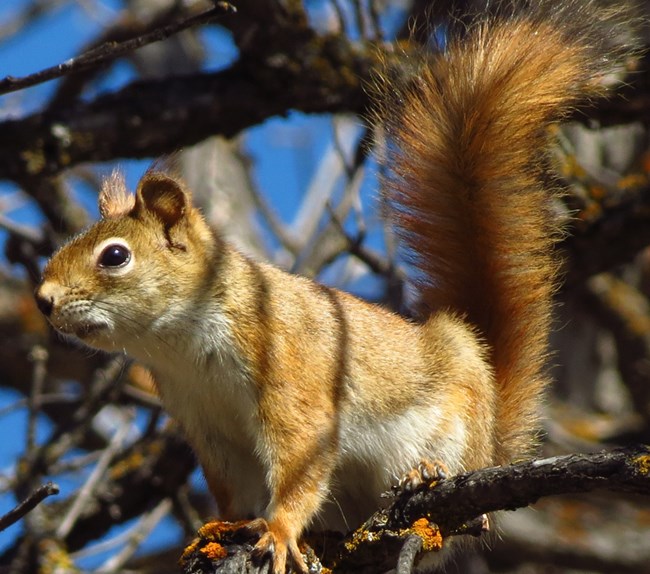
NPS / Michael Wheeler Red squirrel
|
Last updated: September 9, 2025

